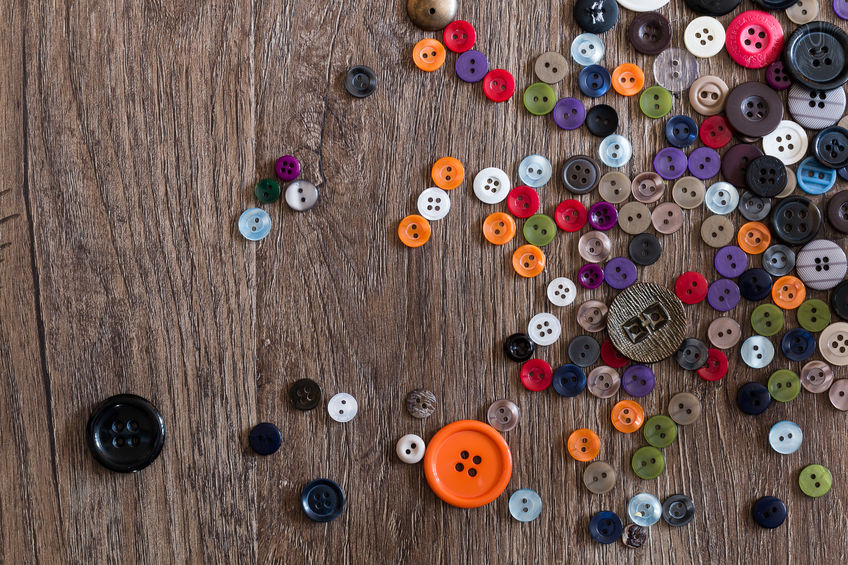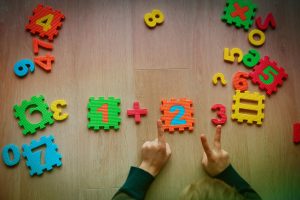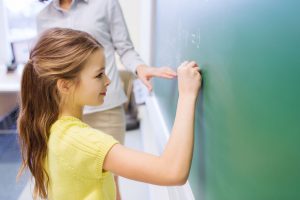Make Math Fun with Buttons!

Introduce or reinforce math skills with simple activities using objects you have around the house, like buttons! Your little ones will enjoy these games that utilize their natural curiosity while sparking counting and sorting skills! While you’re at it, be sure to check out our printable counting worksheets for kindergarten!
You may, or may not, have fond memories of math. If you struggled with math, you can likely find at least one memory of a time when you enjoyed math. It may be before you realized there was such a thing as math. Kids have a natural curiosity about numbers, shapes, and colors. They enjoy play. And math, at the onset, can look a lot like play. (Candy Land, anyone?) The key to having children who enjoy math as they get older is to hold on to that element of play. But that’s for a future article. Today we’ll talk about how to get a good start.
Think about the little bits of things you have hanging around the house–things you may be holding on to or collecting for future use. When I was growing up with four other siblings, my mom had a big jar of buttons. We were always losing buttons. So she kept every button from worn out clothes so she could replace buttons on clothing that hadn’t worn out yet.
I still remember that jar of buttons. They came in so many different shapes and sizes and colors. As a 3- or 4-year old, they captured by attention. My dad made up games using those buttons. I would sit at the kitchen table with him–with buttons all over the table–doing my button “work” as he did his work.
One of my favorite games was the Button Sort. He’d have me sort some of the buttons by size, shape, color, or even by the number of holes the buttons had. After I sorted, he’d ask me to show him a button that fit a description that he’d make up–something that combined several sorting attributes, like a big red button with 4 holes. Or a square, medium-sized button. In Kindergarten, students do similar sorting tasks with shape tiles. They learn how to classify shapes this way. It provides a great start with logic as well.
If buttons are not abundant in your home, look for other small objects that vary by two or more characteristics, such as pencils and pens, paper clips, small toy parts, etc. If you don’t have any stray pieces from games, you could pick up used games from yard sales or a thrift store for the purpose of having some objects for your child to sort. Any objects that vary by color and size would be great for sorting, but if they also vary by shape, you can begin to introduce your child to shape names.
Buttons, or other little objects you have around the house, can also be used to introduce your child to counting. Ask your child to show you 2, or 3, (or more, as they become more familiar with greater numbers) objects. Have your child “prove” that they have the number you asked for by touching each one and counting them one by one. This helps reinforce the order of the counting numbers.
Once your child can confidently make sets of up to 10 objects, you can start adding and subtracting games. Ask your child to make two different sets of objects. Have the total be 5 or less to start with. After they make the two sets, ask them how many they have all together? They can push them together in one group and count them. Gradually increase the number of objects in each set to 10 and then to 20. Similarly, you can introduce subtraction by having your child make a group of objects and ask, “I’m going to take 2. [Separate the amount you take from the rest.] How many do you have left?” Again, start with 5 or fewer and take away 1 or 2. Gradually increase the starting number and the number you take away.
Sorting, counting, adding, and subtracting are the main skills children learn in preschool and Kindergarten. Starting at home with these skills will set a foundation that will give your child confidence with numbers, and he or she will think they are just playing. Even as your child is introduced to more and more complex math skills, you’ll be surprised to find that you can return to those same sets of objects. Yes, even fractions and algebra can be modeled with home objects. Stay tuned to find out how!



